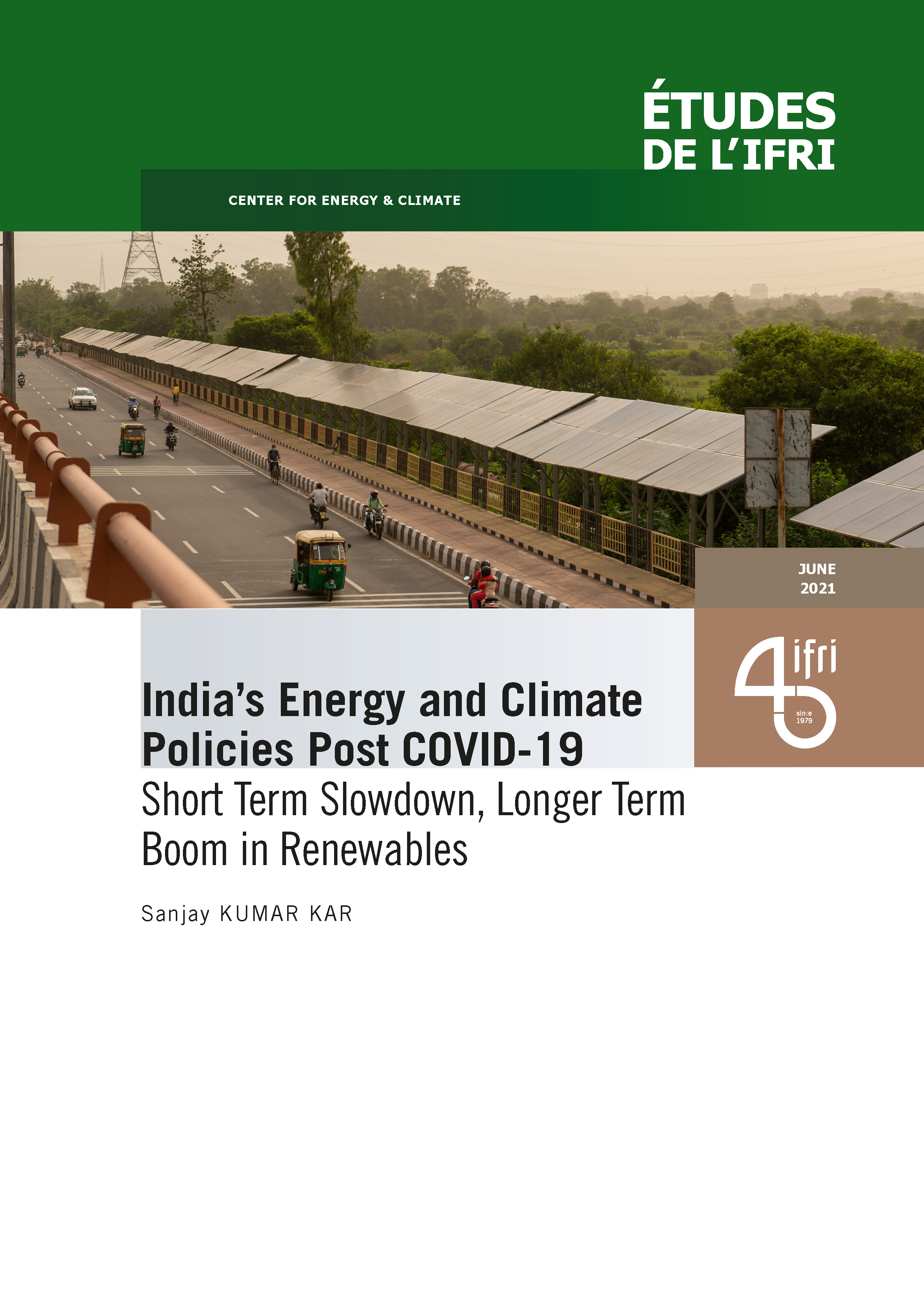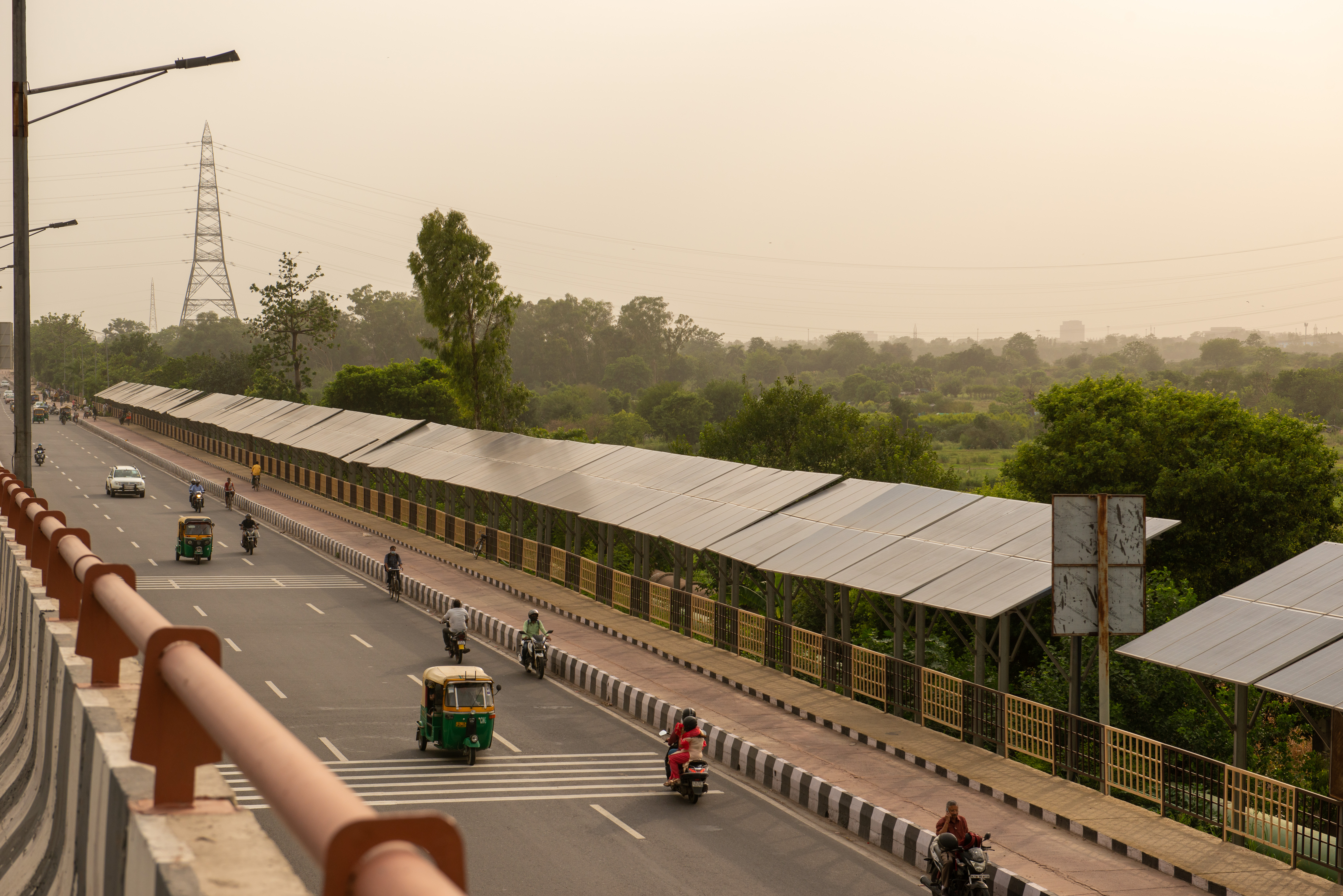India’s Energy and Climate Policies Post COVID-19: Short Term Slowdown, Longer Term Boom in Renewables

India has long been a positive and committed partner in global and domestic climate change mitigation efforts.

India is now among the world’s pioneers in climate change mitigation efforts with its highly optimistic objective of installing 450 gigawatts (GW) of clean electricity generation capacity by 2030 (from 100 GW of combined wind, solar, and biomass capacity in early 2021), of developing smart, sustainable, and resilient cities, of deploying electric cars and two wheelers, adopting energy conservation measures, or having Indian Railways committing to become carbon neutral within ten years. India is already the world’s fifth largest solar market by installed capacity and ranks among the top 5 in terms of solar panel manufacturing capacity, with over 20 GW production capacity within reach in a few years. India’s solar boom is expected to continue once the pandemic is over and move up a gear. Dozens of large offshore wind projects could also be developed. Yet rapid renewable capacity additions will boost grid expansion requirements. Capital for grid expansion could be a challenge in the coming years. Huge electricity storage capacities are also needed. Moreover, the country needs to expand its nuclear power generation capacity further. Energy efficiency is a priority with key low hanging fruits reaped, such as the deployment of LED lightings. Lastly, natural gas will play a role to develop and transform India’s energy system, with Liquefied Natural Gas (LNG) imports set to increase sharply in the coming years.
COVID-19 is a big hurdle as the coronavirus lockdown is unquestionably a significant setback for India’s modern energy systems and even more so for everyday lives. The pandemic jeopardized the growing economy, raised the number of poor people, and slowed down tax collection, which means the government has more limited options for funding sustainable projects. The deployment of renewable energy sources is thus unlikely to meet the set targets for 2022, with less than 100 GW installed while another 75 GW would need to be deployed within 22 months. Massive private local and foreign investments will be needed if India is to meet its 2030 targets, alongside reinforcing the electricity grid.
Yet despite the ongoing COVID-19 pandemic, India continues its mission to become an environmentally sustainable nation. There are valuable lessons that India should learn from this period to prepare for a greener economy. During the pandemic, coal fired power generation decreased and while it is expected to pick up again, lower utilization factors and poor economics will further push renewable deployment and halt new coal plant additions. Decisively, efforts to make cities more resilient and reduce air pollution are expected to be further fostered.
India is inclined to walk on the path of clean energy transition without a second thought. Climate and environmental protection are a collective responsibility, and India understands its role and responsibilities. Yet India’s battle against climate change mitigation and adaptation needs support, cooperation, and financial assistance from developed nations. Multilateral funding agencies should strengthen their financial support. India’s commitment to sustainable developments is partially dependent on access to green and clean technologies available in the developed nations. So, India must initiate necessary actions to enhance technology access at an affordable cost.
Most of the ministries have developed relevant policies for low carbon technologies. It is time for India to develop a comprehensive national strategy on low carbon technologies, which should address technology development and deployment as well as related sustainable and digital infrastructure creation. The pandemic has taught a lesson that India can develop homegrown technologies to meet its citizen’s expectations, and that comprehensive and urgent action is required to fight city air pollution.
Download the full analysis
This page contains only a summary of our work. If you would like to have access to all the information from our research on the subject, you can download the full version in PDF format.
India’s Energy and Climate Policies Post COVID-19: Short Term Slowdown, Longer Term Boom in Renewables




